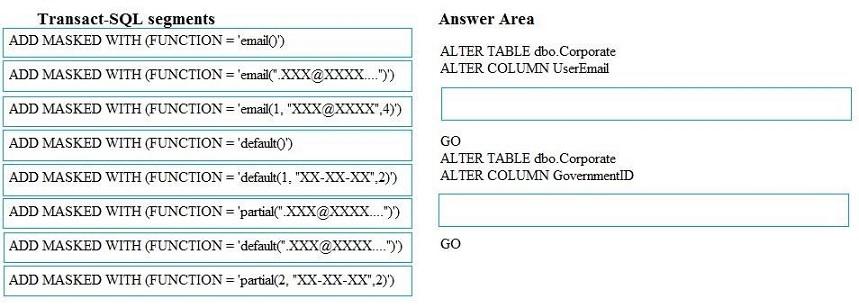DRAG DROP
Background
You are managing a multi-tenant environment hosted within Windows Azure. All changes to the database are pushed to a template database which is stored as a Microsoft Azure SQL database named ContosoTemplate which is stored on the virtual SQL Server named SQL1. You also have a virtual SQL Server named SQL2.
Microsoft Azure SQL database named ContosoTemplate which is stored on the virtual SQL Server named SQL1. You also have a virtual SQL Server named SQL2.
You are provisioning an Azure SQL Database instance named DB1. No Azure firewall rules have been created.
You plan to deploy the following databases to an elastic pool: EDB2, EDB3, EDB4, EDB5, and EDB6. All of the databases in the pool have the same peak usage period.
You migrate a SQL Server instance named SRV1 to an Azure DS-13 series virtual machine (VM). The VM has two premium disks that are allocated as a storage pool.
You plan to deploy a new Azure SQL Database named DB7 to support an application for your Human Resources (HR) department.
You should prevent users that are not administrators from viewing sensitive data that is stored in DB7. You should accomplish this without any code changes to the various applications that will be reading the data.
Corporate goals for data masking require the following formats:

You need to implement dynamic data masking for each field type.
How should you complete the Transact-SQL statement? To answer, drag the appropriate Transact-SQL segments to the correct locations. Each Transact-SQL segment may be used once, more than once, or not at all. You may need to drag the split bar between panes or scroll to view content.
Select and Place:




The first answer for email masking is wrong. It would be: ADD MASKED WITH (FUNCTION = ’email()’)
https://docs.microsoft.com/en-us/sql/relational-databases/security/dynamic-data-masking?view=sql-server-2016